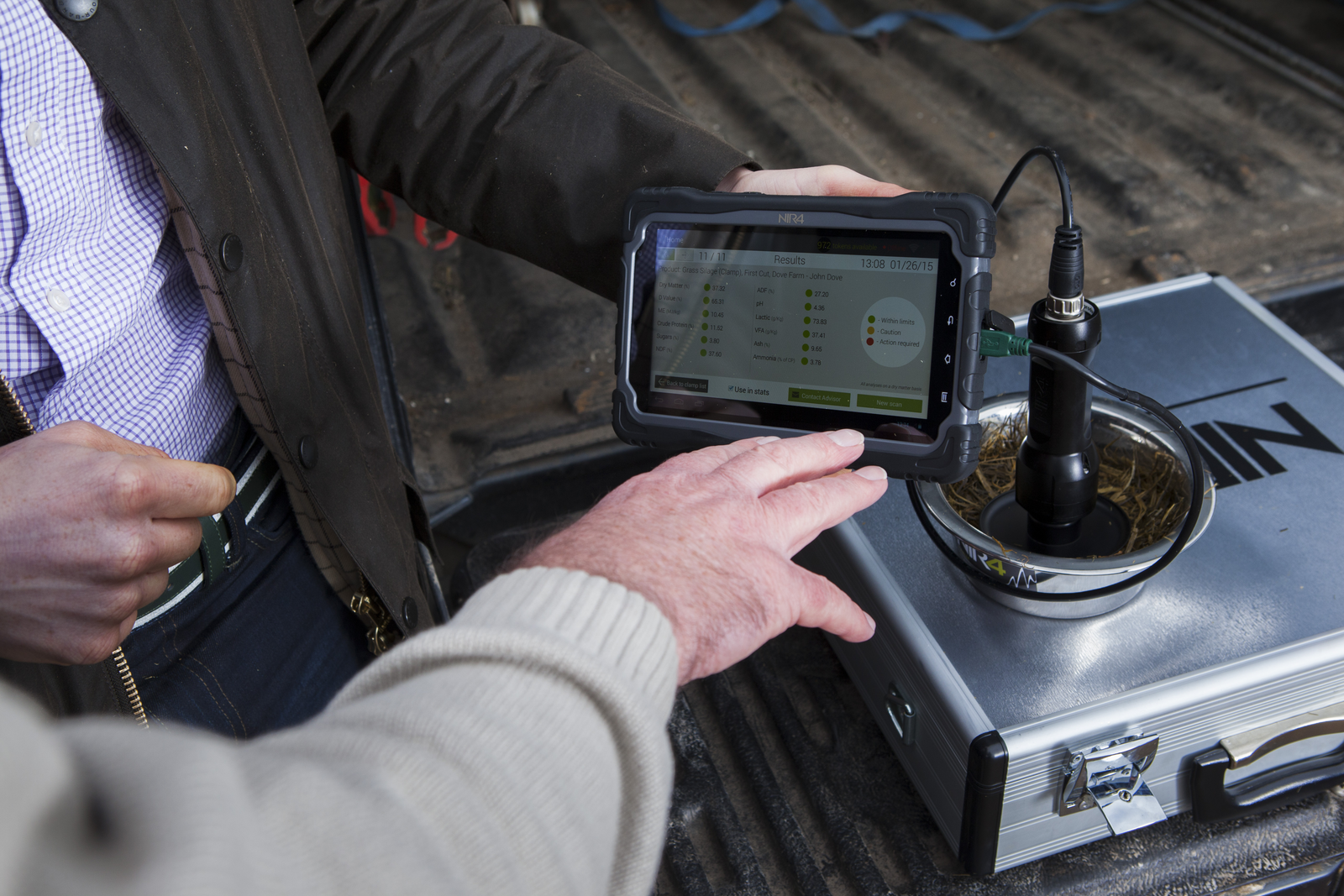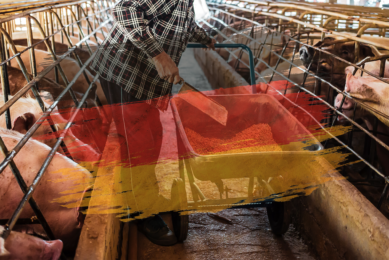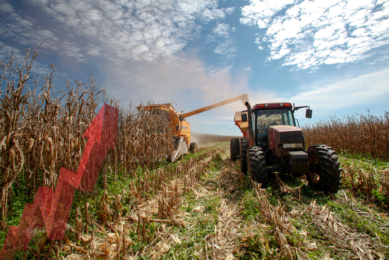Benefits of latest NIR developments

Recent developments in near infrared (NIR) spectroscopy are extremely cost-effective, near instant and provide on-site analysis. This will benefit animal nutritionist to formulate better livestock diets.
Feed costs account for up to 80% of the total variable costs of animal production, and both diet formulation and quality control are a major focus for feed manufacturers and producers. Any deviation from target specification that either under- or over-supplies nutrients will translate directly into economic losses through higher feed costs or lower animal performance.
However, traditional methods of laboratory-based feed analysis are time-consuming and costly, with the delay between sampling and receiving results restricting any ability to respond to deviations in the nutrient profile of incoming feedstuffs or finished feed. Recent developments in near infrared (NIR) spectroscopy that enable extremely cost-effective, near instant, non-destructive on-site analysis therefore have the potential to deliver substantial benefits throughout the animal production industry. Currently used for basic raw material and feed quality control, new advances in NIR software and hardware are set to deliver commercially viable systems capable of in-line and real-time monitoring of feedstuff and feed nutrient content and physical characteristics. Losses associated with feed ingredient variability can be reduced, feed formulations can be amended and the quality of completed diets continuously monitored. The ability to economically test a far larger number of samples from each feed batch will also dramatically improve overall accuracy.
Compact NIR devices have many advantages
The latest compact NIR devices makes it possible to analyse feedstuffs before use, or even before purchase, with quality control possible at any point along the production, delivery and consumption chains. Performance of these compact NIR devices is comparable to laboratory based NIR instruments, but have the advantage that analysis can be taken to farm-level. In addition, software developments have allowed web-enabled NIR analyses in which NIR spectra are downloaded to a master machine containing appropriate calibrations that are stored and updated centrally. The advantages include more regular updating of calibrations, whilst customers will have the option to purchase calibrations on a per sample basis, if preferred. For the worldwide feed industry, these benefits are potentially worth several billion dollars annually thanks to a combination of feed cost savings, feed manufacturing efficiencies and more predictable animal performance.
Reducing ingredient losses
A recent study (Table 1) showed that the energy value of different cereals can vary by around 1.5Mj; and about the same level of variation can be found within one feedstuff. With energy worth between €5 and €20 in feed, and more than 500 million tonnes of mono-gastric feed being produced per year, it is easy to see why the energy value of feed is so economically important. Heat damage can also affect the precision and cost effectiveness of diet formulation. As lysine is heat-processed, it loses its nutritional value – meaning that reactive lysine (a measure of available lysine after digestion) needs to be analysed.
Recent analysis of around 300 samples of soy bean meal showed that reactive lysine accounted for up to 99% of the total lysine. However, the proportion of reactive lysine dropped considerably when the soy bean meal was processed, and so its nutritional value was much lower. This type of calibration is essential for making decisions about the source of soy bean meal. Furthermore, it is essential to know the phytate content of a diet to decide how much phytase to add to maximise its value – and NIR technology can be used to measure this. While phytate varies between different raw materials, it can also vary within a raw material (Figure 1).

Rapid industry-wide adoption
For existing NIR users familiar with the technology, these latest developments will likely be embraced, bringing industry-wide changes to the way in which feedstuff procurement and feed formulations are approached. The ability to instantly assess parameters such as moisture and protein content, as well as DE, for example, has the potential to forever change how cereals are purchased. Those new to NIR, or without recent experience of the accuracy possible with current calibrations, may take longer to adopt these novel systems. The results produced by NIR devices can differ from those produced by wet chemistry analysis, in the same way that one laboratory can produce different results to another, even when using the same methodology and same sample. It is important to remember that results from an NIR machine are precise because they do not include human error.
It can also be disconcerting when faced with results that for the first time highlight the considerable variation in feedstuff quality, even within a single batch. It is therefore important to understand the wet chemistry reference methods used to develop an NIR calibration, which may differ between calibrations. Thus, analytical results based on one particular assay method are likely to differ from those predicted using an NIR calibration based on another laboratory method. Understanding this allows for the implementation of a suitable bias to apply to NIR results if required which, in effect, creates a tailored calibration for your application. However, it is generally the differences between one batch and the next that are more important once a baseline has been established. In this, measurement using the latest NIR technology and calibrations are consistently precise. Add in the time and cost savings relative to laboratory analysis and the benefits of instant results, and the advantage these NIR developments offer to the feed industry as a whole becomes very clear indeed.
You can read more articles from the latest issue by going to the digital magazine and logging in with your current details.












